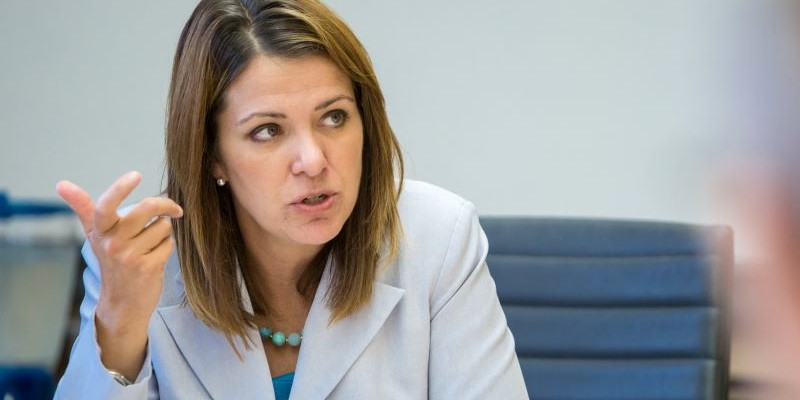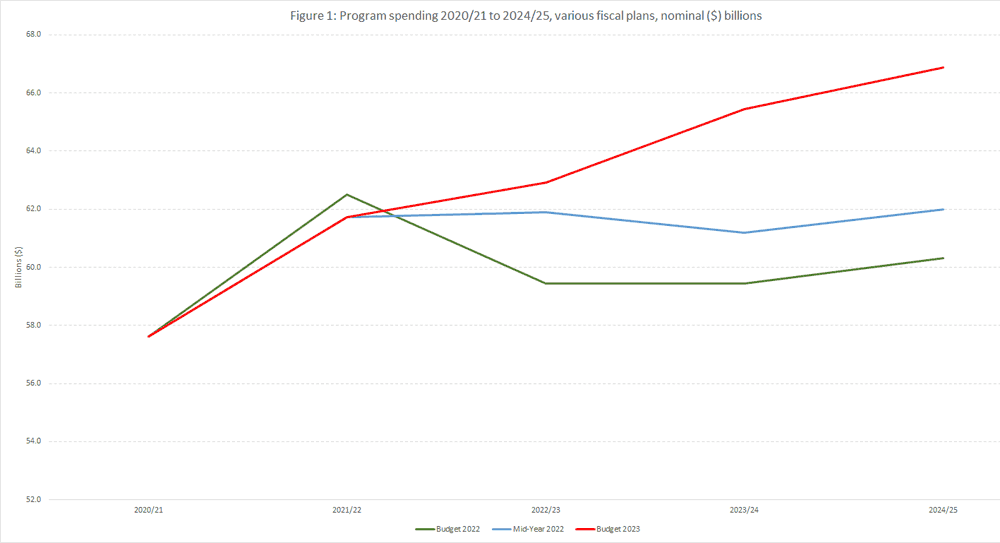Alberta government must stop spending increases—or risk budget deficit

With an Alberta fiscal update expected soon, it’s worth reviewing the Smith government’s fiscal record, which has been characterized by high resource revenue and spending increases.
For example, nominal resource revenue sharply increased from $3.1 billion in 2020/21 to $16.2 billion in 2021/22. It reached a nominal record high of $25.2 billion in 2022/23 and is projected to reach the second-highest level in Alberta’s history at $18.4 billion in 2023/24.
Amid high resource revenue, the Smith governments spending plan has consistently increased. The chart below shows the plans for program spending (total operating spending minus interest payments) in Budget 2022 (released February 2022), the 2022/23 Mid-Year Fiscal Update (released November 2022), and Budget 2023 (released February 2023), from 2020/21 to 2024/25. As the chart shows, when resource revenue spiked in 2021/22, program spending increased. According to the most recent data in Budget 2023, nominal program spending rose from $57.6 billion in 2020/21 to $61.7 billion in 2021/22—an increase of 7.2 per cent.

As the relatively high resource revenues have continued, the provincial government has consistently planned to increase its spending. Again, as the chart illustrates, in the 2022 mid-year update, compared to Budget 2022 under the Kenney government, the Smith government increased the plan for nominal program spending in every year from 2022/23 through 2024/25 for a cumulative increase of $5.9 billion. In Budget 2023, the Smith government further increased the plan for nominal program spending in every year from 2022/23 through 2024/25 with a cumulative increase of $10.1 billion compared to the plan three months earlier in 2022 mid-year update.
Even after adjusting for inflation and population growth, the spending plan has increased markedly. Specifically, according to Budget 2023, after adjusting for inflation, the Smith government will spend $2,401 more per person than planned in Budget 2022 and $1,857 more than planned in the 2022 mid-year from 2022/23 to 2024/25.
The budgetary balance (i.e. a budget deficit/surplus) is simply the difference between government spending and government revenue. Due to high spending, Alberta is at risk of incurring a budget deficit when relatively high resource revenue inevitably declines. That means more debt accumulation and higher debt interest costs for Albertans. To avoid this, the Smith government must stop spending increases and instead more closely align spending with ongoing stable levels of government revenue.
Author:
Subscribe to the Fraser Institute
Get the latest news from the Fraser Institute on the latest research studies, news and events.

